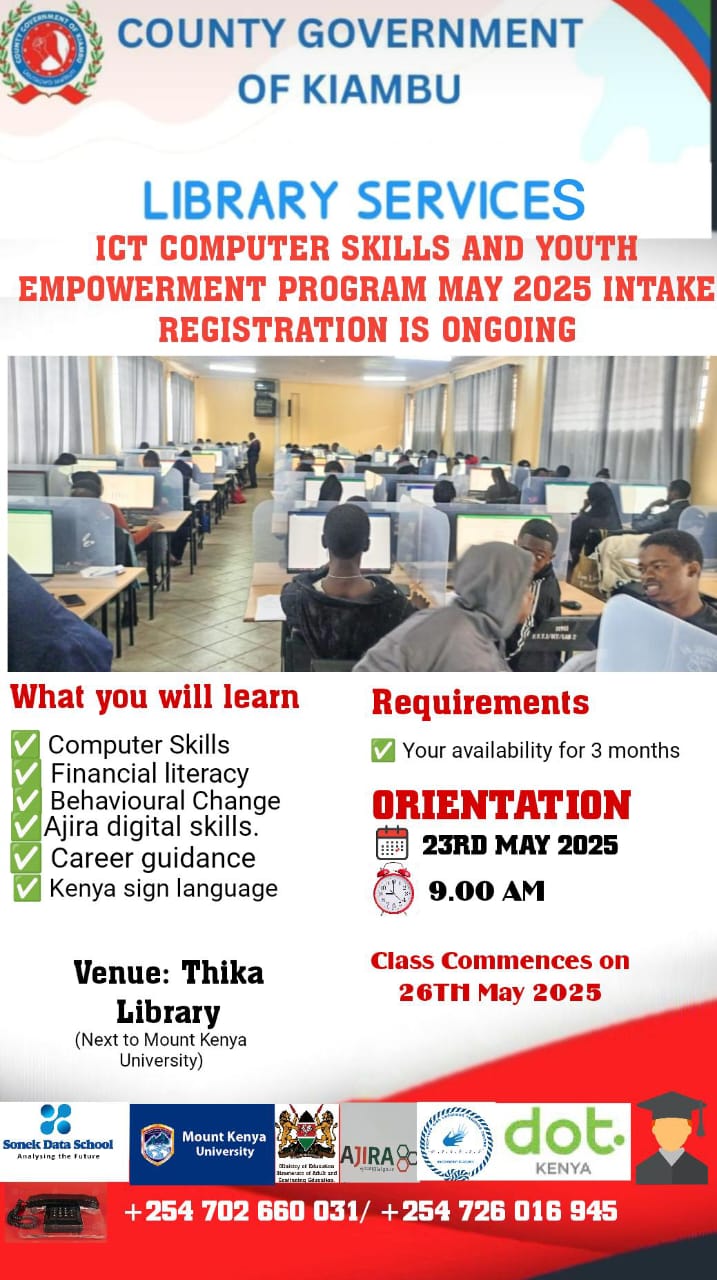County targets Kshs 8 Billion in Own Source Revenue to fuel Kshs 22 Billion 2023/2024 Budget
The County Government of Kiambu has set a target of approximately Sh8 billion in own source revenue (OSR) in the next financial year, the largest ever by the county which has been grappling with underperformance in local revenue mobilisation since the advent of devolution.The low collection has been attributed to weak systems prone to manipulation, theft by unscrupulous revenue officers and top county officials, and failure to exploit available revenue streams which have been depriving the county resources.
According to the proposal now before the county assembly, Governor Kimani Wamatangi, in his first one budget has proposed a budget of Sh21 billion, and says the Sh7.9 billion local revenue target which presents an almost 100 percent increment for the current financial year of Sh4.1 billion, will be realised without increasing the existing license fees and levies.
The 2022/2023 budget was Sh16.4 billion.
Besides the local revenue mobilsation, the county is hoping to receive Sh13 billion as equitable share from the national government, while the balance will be grants from World Bank and other partners to finance the budget.
The governor is banking on an enterprise resource system (ERP), a holistic system that covers management of finances in all the sectors such as hospital management, building approvals, business permits and other revenue charges as well as exploring more revenue streams.
“I have embarked on a deliberate mission to ensure prudence, not only on the expenditure but also on the collection of our revenue. For impactful development Kiambu County can no longer rely only on the ex- chequer, it is for this reason that my administration is installing an enterprise resource planning system,” Wamatangi said.
He added: “With such mechanisms of accountability and systems, I envisage a two or three fold increase in our own source revenue. To this effect, I have set to collect about Sh7.9 billion in the next financial year which will be achieved without increasing the existing license fees and levies.”
Counties collect revenues from several streams as guided by the respective Finance Acts and Bills, among them property rates, building permits, agricultural transportation fees business licenses, liquor licensing fees, vehicle parking fees, hospital fees and public health services, and outdoor advertising, county housing rent, fines, penalties, and forfeitures, environment and conservancy administration fees, game reserve fees, game reserve fees.
A report by Commission on Revenue Allocation’s (CRA) and World Bank dubbed “Comprehensive Own Source Revenue Potential and Tax Gap Study of County Governments” released on October 5, 2022, said counties have a have the potential to collect up to Sh216 billion annually from their key revenue streams compared to the present Sh31 billion.
Kiambu, the report said can raised over Sh13 billion, whereby it has the ability of collecting between Sh7 billion and Sh9.3 billion from the property rates alone, business licenses fetched Sh617 million yet the potential was Sh1 Billion while from parking fees, Sh279 million was realised but what would have been raised was Sh1.19 billion. Should the budget is passed, Health department will get an allocation of Sh7.69 billion, Roads and Transport docket which deals with among other works construction and maintained of roads will get Sh2.569 billion, Finance (Sh1.7B), Education (1.54B), Agriculture (1.4B), Trade (Sh996M) and Administration will get Sh949 million.
Water and Environment will get Sh89o million, Land and Housing (Sh858 million), while Youth and Sport will have a budget of Sh331 million.
The county assembly has been proposed to get a budgetary allocation of Sh1.567 billion.
The County Executive Committee Member for Finance and Planning Ms Nancy Kirumba said the Sh7.9 billion OSR target has been informed by an ongoing Rapid Response Initiative on revenue, a friendly exercise meant to monitor compliance on revenue payment and campaigning on the need for locals to pay revenue.
The exercise, she said unearthed gaps which have been denying the county billions, and they include outright theft where fake payment slips are used by a section of county revenue officers, weak revenue systems that delay payments leading to non payments.
Already, a case is under investigation by detectives at Thika Police Station where unscrupulous finance officers were found to have used payments made by a leading poultry producer to generate single business permit licenses for several traders whose payments were diverted.
“The exercise gave us an opportunity to understand the needs and the challenges of our people, and persuade them on the importance of paying levies and also most importantly, monitor how revenue officers conduct themselves when interacting with clients and managing funds. We have initiated reforms such as turning to technology to eliminate theft of revenue by embracing cashless, being innovative by exploring new tax areas, and coming up with targets and tracking systems on a regular basis,” Kirumba said, adding that they will be setting up camps in the wards this month to being the services close to the people.
Lands and Housing CECM Salame Wainaina said once the county installs the new ERP system, which will also incorporate the building approval system and land rate platform, it will be able to raise more revenue from the property sector.
Initially, the county was using Electronic Development Application System (EDAMs) for building approvals but it was terminated following concerns that developers were making applications but would get frustrated due to regular downtime of the system.
Some developers had stayed for up to three years without their applications being processed, with the governor rogue officials would then demand bribes in order to process them outside the system, leading to substandard buildings that have been collapsing.
Wamatangi ordered the county to temporarily revert to manual pending assembling of a good system, and last month alone, about 1, 500 applications were cleared.








